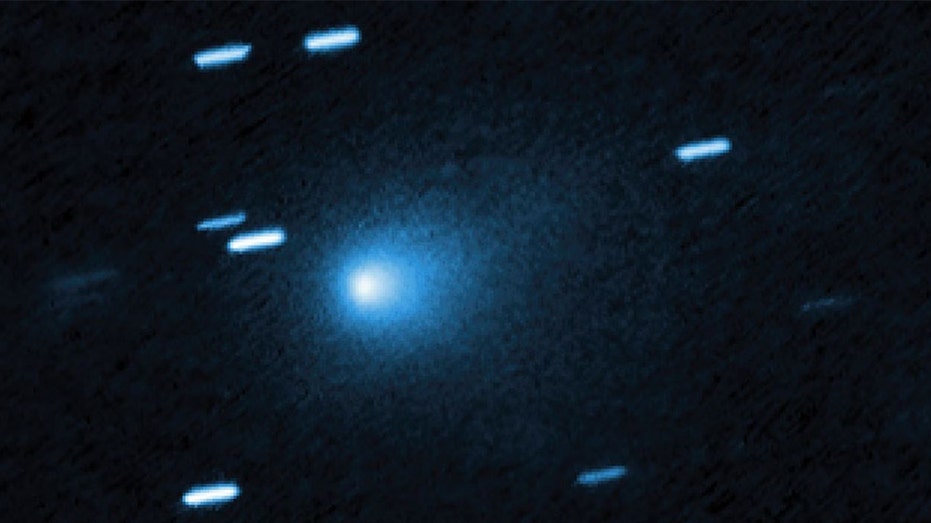Harvard Scientist Suggests Interstellar Object Could Be Nuclear-Powered Spacecraft

A Harvard physicist has raised intriguing new possibilities regarding 3I/ATLAS, a rare interstellar object passing through our solar system. Initially identified as a comet, recent observations have led some scientists to consider it might be something entirely different—a nuclear-powered spaceship.
Discovered in early July by the Asteroid Terrestrial-impact Last Alert System (ATLAS) in Chile, 3I/ATLAS is only the third confirmed interstellar visitor to enter our solar neighborhood, according to NASA. While the object was classified as a comet, Dr. Avi Loeb from Harvard University pointed out unusual features that challenge this interpretation. Notably, an image revealed a surprising glow in front of the object, rather than trailing behind it—a phenomenon that is atypical for comets, which usually display a tail due to solar wind and outgassing.
Unusual Brightness and Possible Energy Sources
Loeb explained in a recent blog post that the brightness profile of 3I/ATLAS cannot be explained by conventional sunlight reflection or standard cometary activity. Instead, he suggests the object might be generating its own light, potentially from nuclear energy. Alternatively, it could be a spacecraft powered by nuclear reactors, with dust particles on its surface from its journey through interstellar space. However, Loeb emphasized that this remains speculative until more evidence is available.
-
FBI Issues Urgent Warning: AI-Driven Scams Targeting Your Finances

-
Chinese Electric Hypercar: The Yangwang U9 Soars Over Obstacles with Autonomous Precision

-
Google Launches Pixel 10 Series with Enhanced Tensor G5 Chip and Advanced AI Features

-
Australian Bank Rehiring Staff After Allegations of Falsified Chatbot Performance Claims

Other natural explanations—such as a primordial black hole or a supernova fragment—were considered unlikely. The black hole scenario would produce only about 20 nanowatts of energy, far too weak to account for the observed luminosity. The possibility of radioactive debris from a supernova was deemed improbable due to its rarity, and heating from interstellar gas and dust was ruled out based on physical constraints related to momentum and density.
The Case for Nuclear Power
Loeb suggests that the simplest explanation for the object’s high luminosity is a powerful internal energy source, most plausibly nuclear energy. Achieving the observed gigawatt-level brightness would require a highly efficient power source—something that aligns with nuclear reactors used in spacecraft and satellites.
Despite these intriguing hypotheses, Loeb clarifies that he does not definitively claim 3I/ATLAS is nuclear-powered. Instead, he notes that if natural models cannot explain its features, then a technological origin becomes a plausible, albeit unconfirmed, possibility. Confirming this would demand further observations and evidence.
Unusual Trajectory and Cosmic Coincidences
Adding to the mystery, Loeb points out the object’s highly unusual trajectory. It approaches the solar system from a direction that is statistically unlikely—only one in 500 objects would have such an alignment with planetary orbits. Additionally, 3I/ATLAS is expected to pass near Mars, Venus, and Jupiter, an improbable coincidence, according to Loeb. Its closest approach to the Sun is predicted to occur on October 30, at about 130 million miles away.
Loeb emphasizes that if future data confirms a technological origin, it could have profound implications for humanity’s understanding of extraterrestrial intelligence and space exploration strategies. The discovery underscores the importance of continued observation and analysis of interstellar visitors, which may hold answers to some of the universe’s most profound questions.
